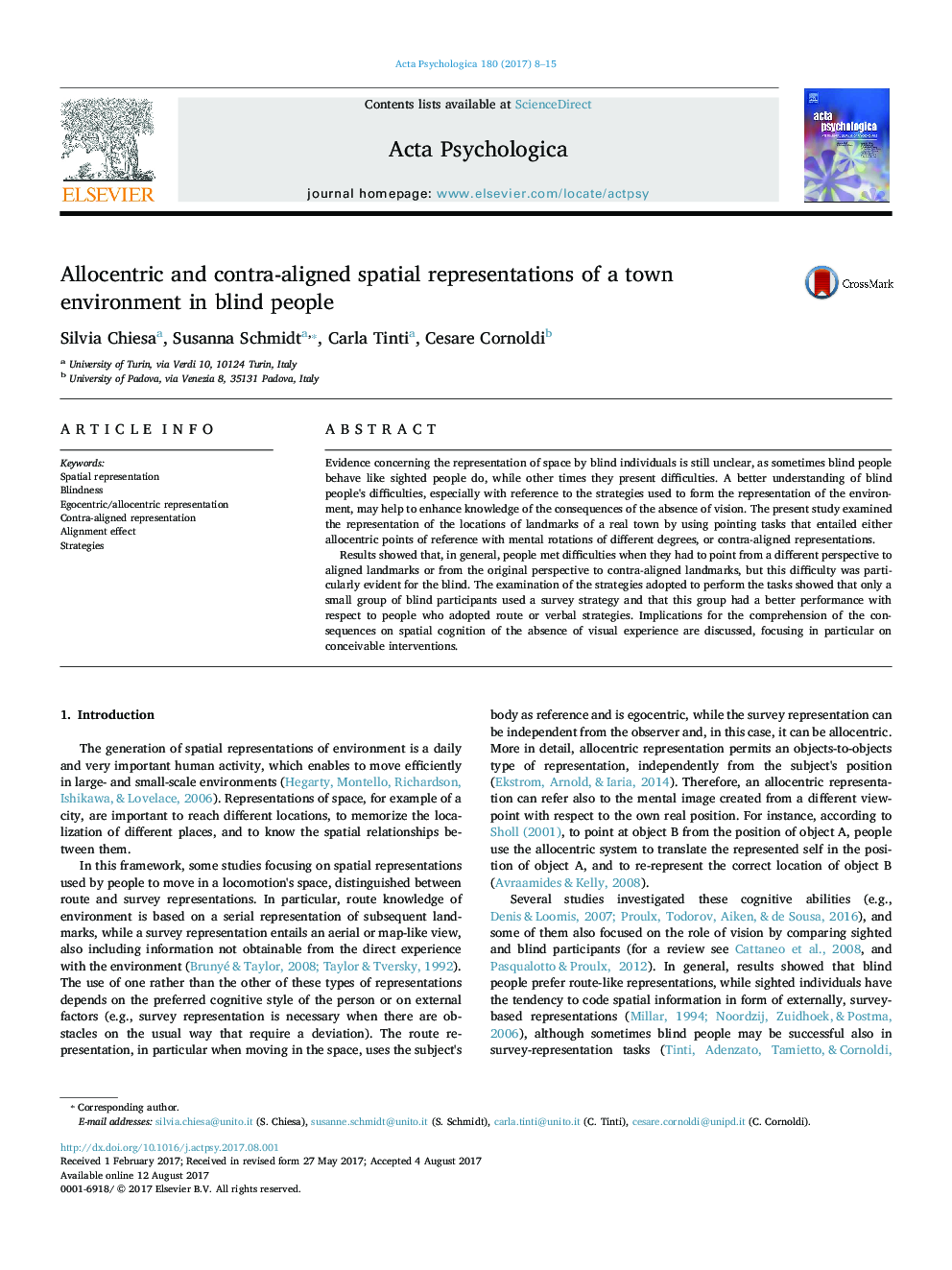| Article ID | Journal | Published Year | Pages | File Type |
|---|---|---|---|---|
| 5040177 | Acta Psychologica | 2017 | 8 Pages |
â¢Blind and blindfolded sighted participants explored a tridimensional city map.â¢They performed pointing tasks entailing allocentric and contra-aligned representations.â¢Performance decreased with increasing mental rotations and contra-aligned representations.â¢Differences between blind and sighted people were observed.â¢Participants who used a survey strategy performed better.
Evidence concerning the representation of space by blind individuals is still unclear, as sometimes blind people behave like sighted people do, while other times they present difficulties. A better understanding of blind people's difficulties, especially with reference to the strategies used to form the representation of the environment, may help to enhance knowledge of the consequences of the absence of vision. The present study examined the representation of the locations of landmarks of a real town by using pointing tasks that entailed either allocentric points of reference with mental rotations of different degrees, or contra-aligned representations.Results showed that, in general, people met difficulties when they had to point from a different perspective to aligned landmarks or from the original perspective to contra-aligned landmarks, but this difficulty was particularly evident for the blind. The examination of the strategies adopted to perform the tasks showed that only a small group of blind participants used a survey strategy and that this group had a better performance with respect to people who adopted route or verbal strategies. Implications for the comprehension of the consequences on spatial cognition of the absence of visual experience are discussed, focusing in particular on conceivable interventions.
